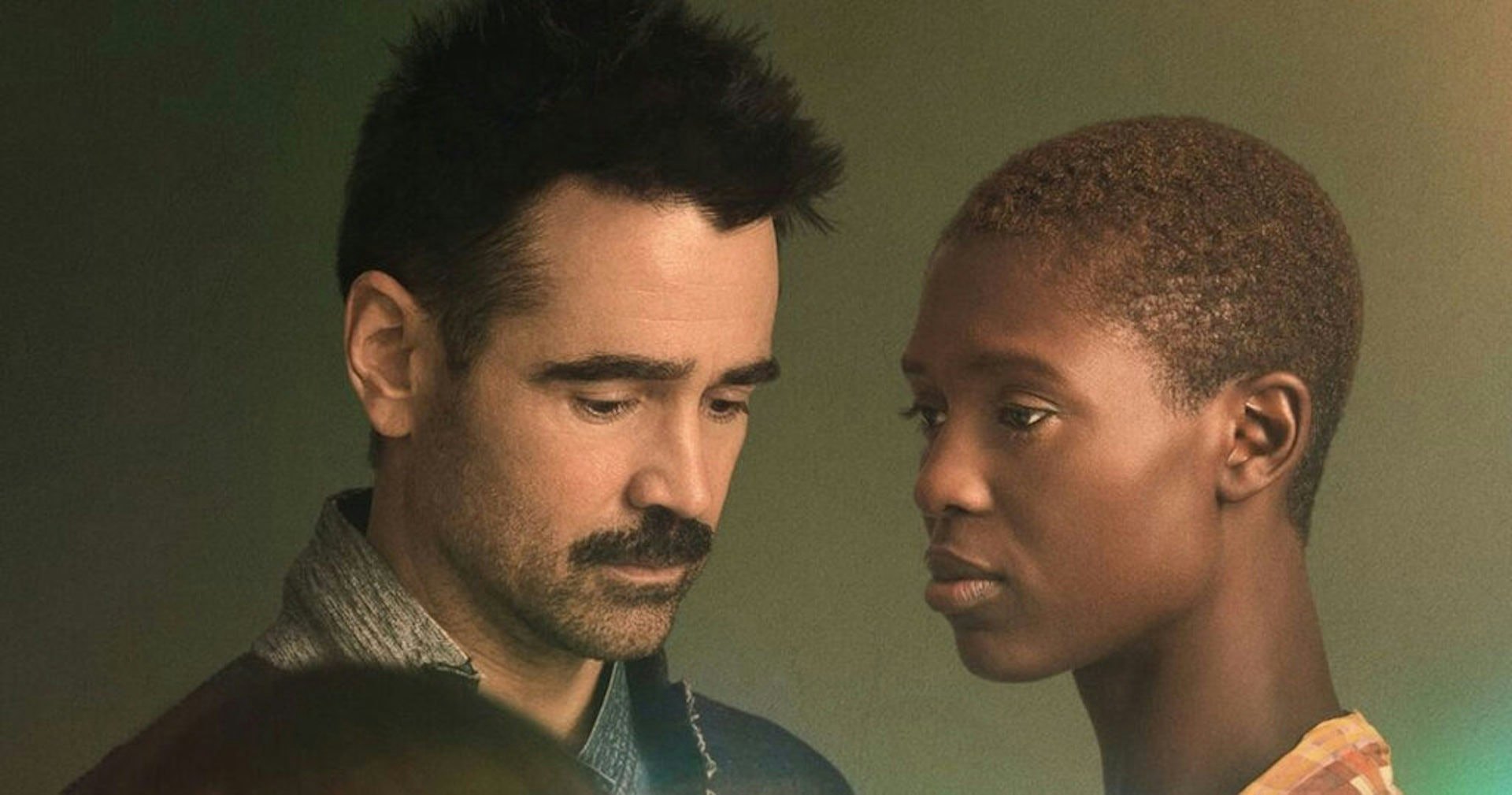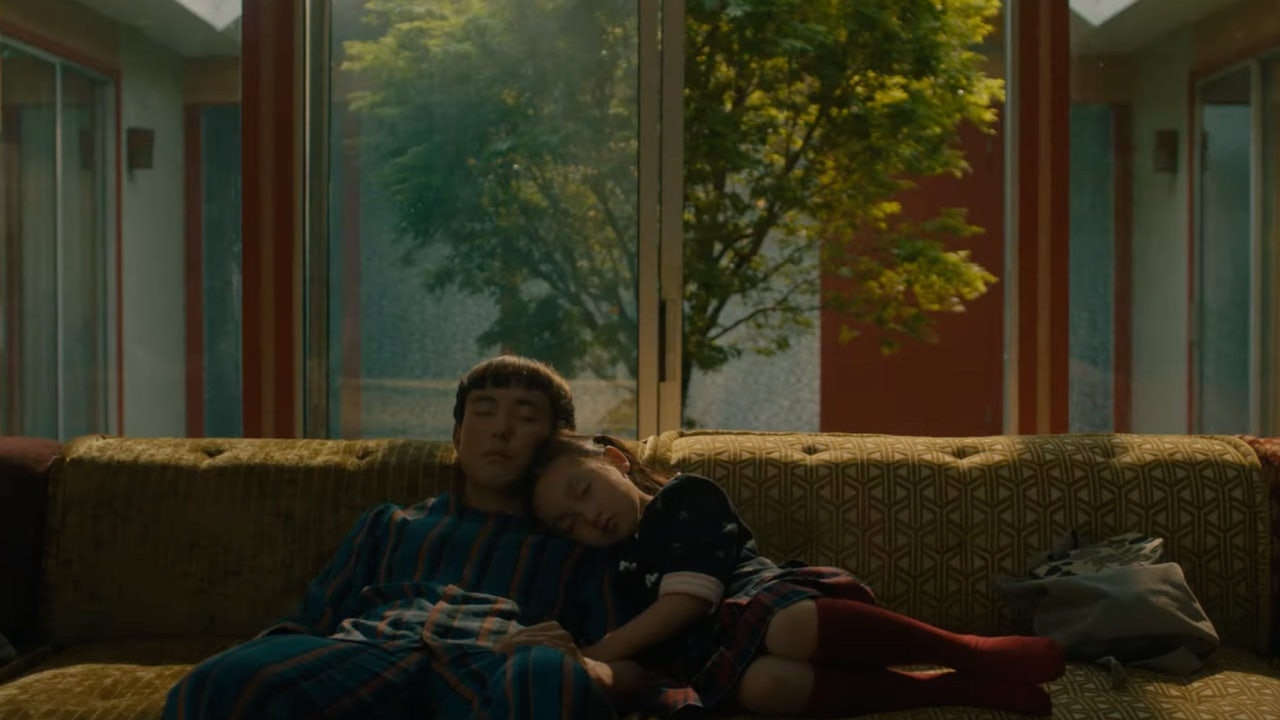
In the sci-fi drama After Yang, there are few unpleasant days.
A tree stands at the center of a family home, with roots that grow deeper all the time. Off in the distance, utopian cityscapes shimmer like mirages, only a short drive away in a self-driving car.
People speak in gentle tones as if concurring with the quiet melodies of every day: raindrops falling outside, grass awash in a slight breeze, sunlight flowing through the glass to melt the living room’s shadows into dark liquid gold. Everywhere is a sense of healing and meditation. Fine weather, isn’t it?
Kogonada’s sophomore effort paints this serene, only slightly futuristic world in warm, delicate brushstrokes, suggesting more than it says. The film hints at some environmental catastrophe that precipitated a widespread global effort to reconcile with nature. However, it’s unclear if this has averted calamity or merely staved off the inevitable.
The Zen-inspired interior design and the loose, flowing kimonos betray an unmistakable East Asian influence. It seems that China has continued to ascend as a global power, though this is never stated outright. It’s possible for humans to reproduce through cloning, though adopting Chinese children is still common, and artificial intelligence now takes the form of lifelike androids integrated fluidly into daily life.
Adapted from “Saying Goodbye to Yang,” Alexander Weinstein’s beguiling wisp of a short story, After Yang opens with a synchronized virtual dance battle between families of four, multiple of which include clones and androids. The film’s most energetic sequence, it is an enlivening introduction to our protagonists — tea-shop owner Jake (Colin Farrell), wife Kyra (Jodie Turner-Smith), adopted daughter Mika (Malea Emma Tjandrawidjaja), and android Yang (Justin H. Min).

Yang, a “technosapien,” was first purchased by the family to educate Mika about her Chinese heritage. But he’s come to mean something more than that to each of them. When Yang unexpectedly malfunctions one day, his disappearance creates a void — and leaves Jake with lingering questions, especially as evidence emerges of the surprisingly complex inner life Yang led.
Much of After Yang follows Jake’s efforts to have Yang repaired, as he eventually discovers that the android had been recording memories and starts to play them back at home. It is through this process that Jake begins to reckon with the reality of losing Yang, whose presence he’d taken for granted, and parses the complexities of his connection to the android.
“After Yang explores the ways grief can illuminate emotional architecture.”
In his 2017 film, Columbus, Kognada mapped the vast possibilities of his characters’ lives within the Modernist architecture that so subtly graced and grounded their Indiana hometown. For all its lyrical beauty, that film had an undercurrent of melancholy, too, a wistful acceptance that moving toward anything means leaving something else behind. After Yang charts a related understanding: that of loss so profound it leads you to step outside your surroundings and see them in a different light. Set in a similarly Modernist structure — an Eichler house of exposed wood and open space — After Yang explores the ways grief can illuminate emotional architecture, all those unconscious ties that bind a family together.

Kogonada and other disciples of Modernism have explained that the architectural style aspires to engage with and find meaning in absence. In After Yang, Kogonada suggests that the mourning process is similar, as Jake is confronted with darkened rooms suddenly steeped in emotion, identifying distances between himself and his family that he hadn’t previously sensed. The mysteries of grief weigh heavy on Jake’s heart but expand his awareness of what is and was transcendent in his surroundings.
In this way, After Yang is as elegant and powerful a demonstration as I’ve seen in the recent American cinema of the essential Japanese phrase mono no aware, for which there is no English equivalent. This refers to a bittersweet realization of the impermanence of things, a gentle sadness at their passing, and an existential mourning that can set in after accepting this state as the substance of life.
But it also refers to the heightened appreciation for a thing’s beauty that the knowledge of its ephemerality can instill. Everything radiates light when it is present, and in its absence, there lingers an afterglow — an inevitable fading — that is nonetheless sublime in how it offers line and proportion to what came before.
The master Japanese filmmaker Yasujirō Ozu, who explored mono no aware through his patiently minimalist films, influenced Kogonada’s sensibility. (His mononym pays tribute to Kogo Noda, one of Ozu’s frequent screenwriters.) In Columbus, the titular Modernist mecca provided an abundance of architectural forms in which its characters could feel truly present and come to a greater understanding of their potentiality. Ozu’s presence lingers in After Yang, as Kogonada and cinematographer Benjamin Loeb (Pieces of a Woman) favor tranquil wide and medium shots that realize the interiors of one family’s home as an extension of their somber demeanors and subtle detachment. The house is uniformly pleasant but sapped of passion.

When After Yang sees through Yang’s memories, however, the film comes alive with color and tactility: the pouring of tea leaves, the brush of a hand against tree bark, the look of love in someone’s eyes. Jake first approaches repairing Yang as one would a faulty appliance. Yet, seeing through the android’s memories awakens Jake to not only the empathy of Yang’s perspective but to a more existential affirmation of the life with which transience imbues all things. Reflecting the multitudes they contain, the android’s memory banks are seen as a sprawling, digitized cosmos that suggest both the secrets of the universe and Yang’s own sense of a soul.
Fittingly, for a Kogonada film, After Yang’s emotional centerpiece unfurls softly between Jake and Yang as they drink tea and share a conversation. For Jake, swirling the leaves is a spiritual pursuit, inhaling their earthy fragrance in an attempt to connect to something organic. He tells Yang about a documentary he once saw, in which Werner Herzog — a filmmaker whose name Jake can’t recall but whose iconic accent he imitates to amusing effect — brought a brew to his lips and could abruptly picture the flourishing landscape from whence it sprung. Jake longs for his connection with the drink to assume a similar depth.
“It is soul-nourishing science-fiction.”
For Yang, the history of tea dates back to ancient China. As such, he’s been programmed with facts that pertain to its origins. But he cannot taste it, and any liquid that passes through his lips will only slosh around in his stomach canister. As he begins to recite what he knows to Jake, Yang stops.
“I wish tea was not just about facts,” he says. “I wish I felt deeper about tea.”
Jake plays back Yang’s memories, looking to better understand the android he now realizes had become a quasi-son to him. He only registers in hindsight the shared nature of their longing for a complete connection and the sincerity with which an artificial creation like Yang could long.

In its gently melancholic way, After Yang is also exploring constructs of identity. Yang’s Asianness is one such construct; he was designed this way so as to serve as a literal and metaphoric bridge between Mika and her heritage. Be this as it may, Yang still longs for a deeper connection to himself and appears to find it as any other aimless, still-forming adolescent might. He seeks out experiences that reflect pieces of that identity back at him, like the company of a young woman and the immersion of a rock concert.
Here, Mitski’s exquisite cover of “Glide,” from the Japanese cult movie All About Lily Chou-Chou, swirls together with composer Aska Matsumiya’s elegiac score, which itself complements an original theme by Ryuichi Sakamoto. It all makes After Yang’s exploration of Asian identity as sensorily potent as it is narratively understated.
“A tender, fertile film about the sadness of beautiful things.”
Moving as if in a haze, forever on the edge of tears, Farrell captures the fog of grief that gradually envelops Jake as the realization dawns that it might not be possible to repair Yang. It’s a somber, internalized performance in a film that operates on that same wavelength. Still, there’s something ever so graceful about Farrell’s ability to surface only slivers of the emotions roiling inside his character. Restraint governs the other performances as well. Min is expressive and exudes a natural calm that makes Yang feel like the most animate object in sight even before we discover the truth, while Turner-Smith and Tjandrawidjaja enchant in smaller roles through unfeigned, naturalistic feeling.
Ultimately a tender, fertile film about the sadness of beautiful things, After Yang reflects transience and permanence as twin states of being, inseparable and contradictory opposites through which we can trace the shapes of our lives. It is soul-nourishing science-fiction, in which technological advances have illuminated new pathways for connection more than it has forced us apart.
In its tangible tomorrow, acts of attention and interest can enrich our appreciation of the “everything” that gives our lives structure. These acts also heighten our knowledge that the act of living within that “everything” is what imbues it with purpose, perhaps even consciousness. You won’t see a more moving and empathetic film this year about life, loss, and the memories through which we can discover meaning in them both.
After Yang will hit theaters and stream on Showtime on March 4.







